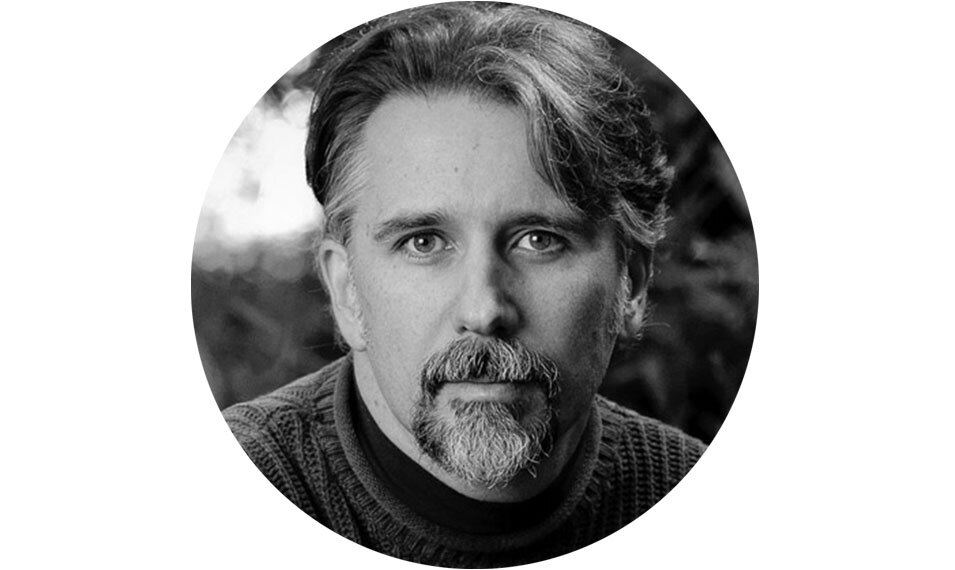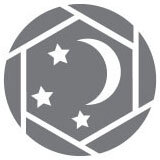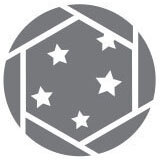Bodie & the High Sierra
Explore the northern part of the Eastern Sierra with nights at the incomparable Bodie ghost town and other locations, including Yosemite National Park. Three vastly different California environs will keep your creative juices flowing in night conditions ranging from dark sky and Milky Way to the gentle light of a first quarter moon.
Workshop Gallery
Workshop Details
June 13-18, 2021 — Completed
This is a 5-night, 6-day workshop. Your adventure begins at noon on Sunday, June 13, and ends after a final slideshow no later than 4 p.m. on Friday, June 18.
$1,950 + applicable taxes. Register below.
Skill level
Open to all who have an understanding of the basic principles of photography and of their cameras.
Group size
13, with 2 instructors — 7:1 ratio
Location website
Workshop Leaders
Registration
THIS EVENT HAS PASSED. THANKS FOR YOUR INTEREST!
| • Deposit of $500 is required to reserve your spot at the workshop. |
| • Balance of $1,450 is due on March 15, 2021. —> Pay balance here. |
| • You may choose the “Pay in Full” ticket if you desire to pay all at once. |
| • Last day for a cancellation request is March 14, 2021 (see cancellation and refund policy). |
| • The workshop fee does not include Yosemite entrance fees, lodging, food, transportation to and from the airport, or transportation to shoot locations. |
The Workshop Experience
Our base for this workshop is the town of Lee Vining, which is just a few miles from the shores of Mono Lake and is also the eastern gateway to Yosemite National Park. It’s the logical base to explore this amazing area, including Bodie ghost town State Historic Park, and also to climb Tioga Pass and dip our toes into the granite wonderland that is Yosemite’s High Sierra.
The workshop is timed between the crescent and first quarter moon, which will provide us with a perfect opportunity to photograph Milky Way panoramas. As the moonlight increases during the week, we’ll take advantage of it for foreground illumination at Bodie, where the emphasis will be on light painting the structures. We’ll spend two nights at Bodie (one is never enough), and at least one on Tioga Pass in Yosemite.
The Eastern Sierra is rich both in geological and human history. To the west of the Sierra range is California’s vast central valley where so much of our food is grown. The climb to the top is long and gradual, and the landscape steadily changes as you climb up through the foothills. The mountains drop off dramatically on the eastern side, from nearly 10,000 feet at Tioga Pass in Yosemite down to 6,781 feet in just a few steep miles to Lee Vining near the shore of Mono Lake.
The Eastern Sierra lies in the rain shadow of the granite spine of California that reaches all the way to 14,505 feet at Mount Whitney, but receives water from the rivers and streams that run down from the mountains. The landscape is mostly dry and barren, but striped with verdant ribbons of green where the waters flow into inland lakes like Mono.
The city of Los Angeles’ thirst for water has played a large role in the recent history of the region, and the decades-long battle between the Mono Lake Committee and the Los Angeles Department of Water and Power is a legendary but fragile victory for the environmentalist movement. In the 19th century, Gold Rush boomtowns like Bodie, and the farms that supplied them, shaped the history of the region and account for much of the area’s tourist appeal today.
We’ll delve into this rich history as part of our exploration of the region during the workshop.
What You Should Know
Participants must have at least basic photo skills, know their cameras well and be comfortable shooting RAW in manual mode with a DSLR or high-end mirrorless camera.
Night photography experience is helpful but not necessary. Even folks with extensive experience shooting at night will find this class challenging, stimulating and inspiring. For advanced photographers, we can offer a portfolio review, specific challenges and goals, and will offer guidance in the field if you mainly want to concentrate on creating portfolio images or learning more advanced techniques.
If you would like to attend this workshop but are unsure whether you have adequate night photography skills, we can offer pre-workshop tutoring to get you ready for your adventure with us. Alternatively or additionally, a few of us have written books that may be productive pre-workshop reads.
What You Will Learn
You’ll go home after the workshop with a solid grasp of shooting the landscape under moonlight and starlight. Milky Way shooting, star trails, star points and light painting will all be explored.
TOPICS COVERED WILL INCLUDE:
planning and shooting multiframe Milky Way panoramas
composing and focusing in low light
using the moon as fill light on the landscape
optimizing exposure for RAW capture and development with Lightroom
light painting and Low-level Landscape Lighting (LLL)
and more …
This workshop will have both field and classroom instruction. We will be in the classroom most days, and out in the field at different locations each night. Participants can stay out shooting as long as they, or their camera batteries, hold out. While in the field, the instructors will demonstrate their own techniques and will work with participants one-on-one to make sure everyone gets the most out of the workshop. During classroom sessions, there will be presentations by the instructors, but we will focus on developing your images and sharing everyone's work and ideas with each other. Each day we will review of the previous night’s work.
Night Conditions
Travel
You are responsible for your airfare and car rental. There is no need for four-wheel-drive or high-clearance vehicles for the workshop, but the road to Bodie is unpaved and bumpy. If you are interested in sharing a car rental, let us know and we will try to connect you with someone like-minded in the group.
Nearby Airports:
Reno-Tahoe (RNO) — 2.5 hours from Lee Vining
Mammoth Yosemite (MMH) — 1.5 hours, but has fewer flight options
It’s also possible to fly into one of the Bay Area airports and make the 6-hour trek across the Central Valley and Yosemite. If you are curious about where your food is grown, and have never driven across California, it might just be worth the extra time. Plan on a full day to drive from the airport in San Francisco (SFO), Oakland (OAK) or San Jose (SJC).
Food & Lodging
We encourage eating two meals per day—a good breakfast and a great early supper. When on the night shoots, you may wish to bring snack food or a sandwich and plenty of water. Nicely’s is the breakfast spot, and most people eat their main meal at the Whoa Nellie Deli. There are a couple of other options, but Lee Vining is a very small town.
You are responsible for arranging and paying for your own meals and accommodations. If you are interested in sharing a room with another participant, let us know and we will try to connect you with someone like-minded in the group. The recommended hotels are Murphey’s Motel where we have reserved a block of rooms, and the El Mono Motel.
Murphey’s is a solid, but basic motel with minifridges in all rooms.
The El Mono is less expensive, eclectic and a little bit funky. It’s attached to the Latte Da Coffee House (best coffee in town), and has a fun and relaxed vibe. Some rooms have shared baths.
The town is small and both hotels are within walking distance to everything.
Weather
Due to its high-elevation climate, temperatures in the Eastern Sierra can be highly variable. Summer days are pleasant, with daytime highs in the 80s F. Nighttime lows range from the mid-60s at the lake to possibly below freezing at Bodie. Or, it could be 60 at Bodie at 1 a.m. You never know.
Recommended Attire
Bring your long johns, hat and gloves, and a warm winter coat, and hope you don’t need them. As always, layer your clothing for flexibility and comfort.
Considerations
Lee Vining is at 6,700 feet of elevation, Bodie is at 8,300 feet, and Tioga Pass is just over 10,000. You might consider coming a day or two early to acclimate yourself to the elevation. There’s no shortage of things to see and do. There won’t be any long hikes, but even walking a few hundred yards from the car to our shoot locations can take your breath away at elevation if you are not acclimated and in able condition.
Note: To ensure the safety of individuals and the group, National Parks at Night reserves the right for workshop leaders to use their discretion to limit an attendee from engaging in a rigorous activity on-site should that person's physical health or ability be in question. If you are unsure about your ability to meet the physical demands of this workshop, we will be happy to discuss your concerns one-on-one before you register. You are also, of course, welcome to attend a workshop and sit out any physical activity that makes you uncomfortable. In such cases, we can provide you with ideas for alternative shoot locations for that time.
Please read our FAQs section for more information about skill and gear requirements, and other information that pertains to all our workshops.
If you have questions, please contact us—we're happy to talk it over with you.
An Origin Story ...
“As an east-coaster who had traveled mostly further eastward at that time, the vast openness and surreal geology of the American West was a truly eye-opening experience.”
I first visited Mono Lake in 1990 as part of a night photography class taught by my mentor, Steve Harper. Every summer, Steve brought his night and figure photography classes from San Francisco’s Academy of Art University to the Eastern Sierra for a week of camping, exploration, and photography.
As an east-coaster who had traveled mostly further eastward at that time, the vast openness and surreal geology of the American West was a truly eye-opening experience. Thirty years later, I’m still inspired by the grandeur and enormity of the landscape, as well as the tumultuous human history of the region. I’ve been going back as often as I can ever since––leading my own workshops to the area since 1999.
My career as a night photographer and teacher was shaped by my time studying with Steve. His passion for night photography and for sharing it with others is in no small way responsible for the existence of this very workshop. Steve’s classes were unlike any that I had attended before. Rather than complete our assignments on our own in between classes, Steve took us out to explore the various neighborhoods of San Francisco at night. Those experiences fostered a sense of camaraderie and community in his students that made him the most popular teacher at the school.
These days, where there are probably more photography workshops than photography college classes, this format has become the norm. Back in the late 1980s it was new, and when I began teaching my own classes in the late 90s, I modeled them after what I had learned from Steve.
Every trip back to the Eastern Sierra is a battery recharge, and a system reset for me, and I look forward to sharing my love of this special place with you.



























